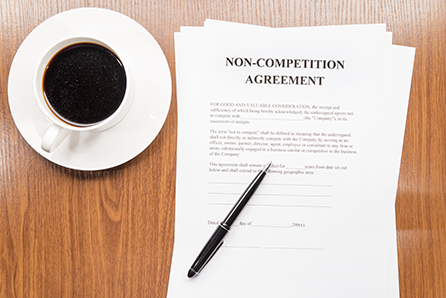Federal Circuit Upends Obviousness Test for Design Patents, Leaving Uncertainty and Potential Opportunity | Sunstein LLP
On May 21, 2024, the Federal Circuit upended decades of precedent regarding design patents in its decision LKQ Corporation v. GM Global Technology Operations LLC. Sitting en banc, a panel of Federal Circuit judges overturned the Rosen-Durling standard for obviousness for design patents in favor of a more “flexible” approach utilized in utility patent decisions. Following this decision, a new framework will be required to determine obviousness for design patents, whether at the United States Patent & Trademark Office (“USPTO”) during examination and post-grant proceedings, or before district courts in litigation. The ambiguity left in the wake of this decision will likely make it harder to obtain – and easier to invalidate – design patents.
Rejecting the Rosen-Durling obviousness test in favor of “flexibility”
Before LKQ, the longstanding Rosen-Durling test required that the primary reference in a design patent obviousness analysis be “basically the same” as the challenged design patent claim, and any secondary references must be “so related” to the primary reference that features in one would suggest application of those features to the other. In LKQ, the court overruled this test, citing guidance from the Supreme Court in the 2007 decision KSR Int’l Co. v. Teleflex Inc., which rejected rigid tests for obviousness for utility patents in favor of more expansive and flexible approaches.
Following LKQ, obviousness analyses must still begin with identifying a “primary reference” that will be “the closest prior art, i.e., the prior art design that is most visually similar to the claimed design.” The more visually similar the primary reference, the better the obviousness case, but no longer does it have to be “basically the same.” Secondary references need not be “so related,” but they must be “analogous art.”
In the case of LKQ v. GM, the claims at issue involved a design for a vehicle front fender, in which the primary and secondary references both related to front-fender designs. In looking at the primary reference, several of the judges at oral argument indicated that the claimed design seemed obvious in light of the primary reference because of the close visual similarity. However, they could not say that the “basically the same” requirement had been met. This let them to suggest that the standard was simply too strict, which factored into their decision to do away with the Rosen-Durling test altogether.
In any obviousness analysis involving both primary and secondary references there must be a reason one of ordinary skill in the field would be “motivated” to combine the primary and secondary references. In LKQ, the primary reference included the sculpted features shown in the primary Lian reference with, among other things, the rounded wheel well in the secondary Tucson reference. In the case of design patents, as explained in LKQ, this means a party challenging a design patent as obvious because it combines elements of two instances of prior art must convince the court that an ordinary designer in the field would be motivated to combine the references to “create the same overall visual appearance as the claimed design.” Applying KSR, the Federal Circuit explained that the motivation to combine does not need to be spelled out in the prior art designs themselves, but there must be some reason a designer (such as a car manufacturer) would combine them. Such reasons might include that designer’s experience and creativity, the demands of the market, or industry customs. Additionally, in LKQ the Federal Circuit was clear that design patent owners can still rely on secondary considerations, such as copying and commercial success, to demonstrate non-obviousness.
Questions Abound Regarding “Analogous Art”
Moving forward, a key issue in obviousness challenges will be what constitutes “analogous art” that will comprise the primary and secondary prior art references. While the test is clear for analogous art in utility patents, it doesn’t translate as well to designs. For utility patents, the first option for identifying “analogous” art is determining whether the reference is in the same field of endeavor as the claimed invention. However, if it’s not within the same field of endeavor, the second option used for utility patents is to consider whether the reference is still “reasonably pertinent to the particular problem with which the inventor is involved.”
For designs to be patentable, they must comprise non-functional, aesthetic choices. Most often, there is no clear “problem” to be solved. In fact, design patents do not have written claims or descriptions describing the aim of the design, and instead consist entirely of drawings. Thus, it will be very difficult to assess whether a prior art reference is “reasonably pertinent” to the unstated “problem” being solved by the claimed design.
The Federal Circuit acknowledged that this remains an open issue, but left it to future cases to hash this out on a case-by-case basis. This leaves the door wide open to challengers to contest the validity of design patents. Design patent owners will have to advocate for a clear, sensible application of the obviousness analysis. Of particular importance will be how the USPTO and courts determine whether ordinary designers would have a motivation to combine prior art references that come from “analogous” designs. For example, would be obvious for an ordinary designer to combine a design for a car fender with the design of an art sculpture or a lamp?
Reactions from the Industry
During briefing, the Federal Circuit received numerous amicus curiae briefs from various industry groups, the USTPO, and intellectual property associations begging the Federal Circuit to avoid the uncertainty that would result from overruling Rosen-Durling. GM, the owner of the patent at issue, argued that eliminating the test will “revert to a rudderless free-for-all [and] will increase confusion, disrupt settled expectations, and leave lower courts and factfinders without the necessary guidelines to properly conduct the obviousness analysis.” Similarly, the American Intellectual Property Law Association (AIPLA) argued that “[e]liminating this framework now carries great risk, including exposing up to 400,000 U.S[.] design patents to substantial uncertainty [and] upsetting settled expectations for applicants before the USPTO and the public at large.”
The majority of the Federal Circuit en banc panel took note of these amici but disagreed, saying that a fact-based non-rigid test would be just as “workable” for design patents as it has proved to be for utility patents.
Writing for the minority (in which he called for a modification of Rosen-Durling, rather than overruling it), Judge Lourie noted that the court took issue with the fact that the amicus briefing was “primarily dominated by entities with economic interest in the outcome of the case—supporters of automotive manufacturers, automotive part replacement companies, and insurance companies, each advocating for results and legal concepts supporting their economic interests.” That said, the broad-based organizations such as the IPO, AIPLA, INTA, and Institute for Design Science and Public Policy also advocated against overruling the Rosen-Durling test, given their “primary interest in the stability and clarity of the law.”
Some prominent advocates in the U.S. design bar have long noted the problematic nature of the non-obviousness test for design patents, and continue to call for a design registration system akin to that adopted by the EU.
Updated Guidance from the USPTO
Just one day after the LKQ decision issued, the USPTO issued “Updated Guidance and Examination Instructions for Making a Determination of Obviousness in Designs in Light of LKQ Corp. v. GM Global Technology Operations, LLC.” The USPTO reiterated the Federal Circuit’s decision, noting that “USPTO personnel must apply a flexible approach to obviousness similar to that applied in utility applications.”
Noting that the Federal Circuit did not define how to determine whether a prior art design outside the field of endeavor is analogous art, the guidance has examiners “consider the degree to which an ordinarily skilled design would be motivated to consider other fields.” However, there remains no guidance regarding how to determine such motivation. In light of these circumstances, the USPTO stated that it is “ continuing to study LKQ in the context of existing precedent; further guidance and training will be forthcoming.”
Where This Decision Leaves Us
The LKQ decision leaves great uncertainty for the owners of the over 400,000 unexpired design patents. The decision will undoubtedly be a boon to patent challengers (and potential infringers), and will likely lead to more obviousness rejections by the USPTO. Given the rising costs of filing for design patents (from $1,760 to $2,600 in USPTO fees alone), it will also likely factor into whether they are worth the costs of obtaining them in the first place.







